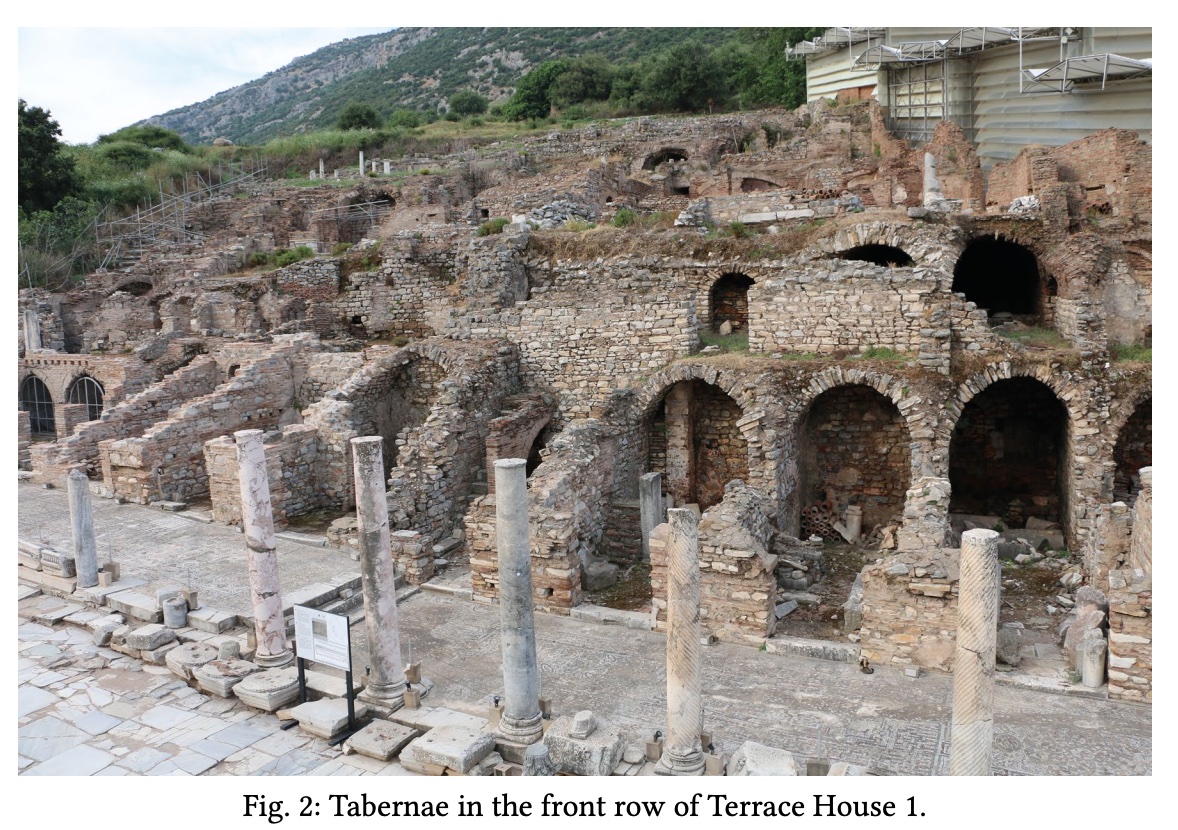Lorem ipsum dolor sit amet, consectetur adipiscing elit. Morbi eu nulla vehicula, sagittis tortor id, fermentum nunc. Donec gravida mi a condimentum rutrum. Praesent aliquet pellentesque nisi.


Many architectural structures that have been excavated in Ephesos, are generally interpreted as tabernae.1 This interpretation is based on their location within the
buildings and their urbanistic context along the streets (fig. 1). So far the Ephesian tabernae have received little attention, largely because, as a building type, they appear relatively frequently, both in archaeological excavations in other cities in the west (e.g. Pompeii2 and Ostia3), as well as in literary sources. Only
rarely, however, have tabernae been a distinct area of research. Often the excavation ended at the facade of the insulae because the researchers were more interested in the street itself and its accompanying porticoes. In other cases, structures, which were later built within the porticoes, were frequently removed without precise documentation or were not completely excavated.